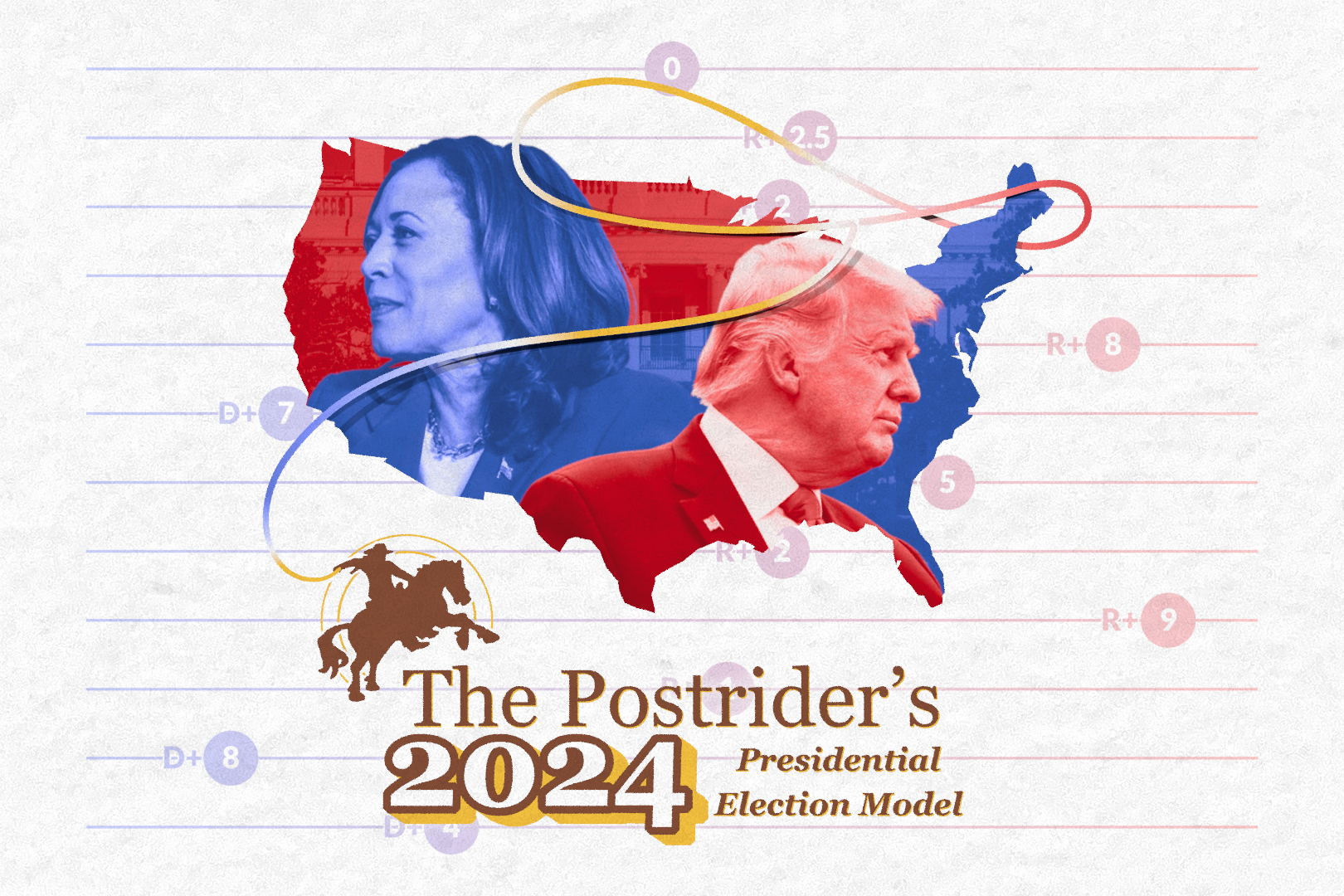
Our 2024 Presidential Election Model is Back!
And… we’re back. Having put our model on hold in the wake of President Joe Biden’s withdrawal from the race back in mid-July, we’ve spent some time recalibrating, touching up, and refreshing our model so we could begin framing our analysis of the race between Donald Trump and Kamala Harris.
Our coconut-adjusted presidential election model is now back up and running, so feel free to head right over, check it out, and begin playing with it. Our methodology and quick explainer have also been touched up – the way it all works remains fundamentally the same, but references to Joe Biden as the Democratic nominee obviously needed amending, for example. For some more details on what has been tweaked in terms of data, or our assessment of the race, and our already-published articles regarding the race, read on.
National and Local Factors
Even as Harris became the presumptive Democratic nominee, we needed time to assess how coalitions, polls, and enthusiasm were different – especially among major voting demographics – compared to our assessments for Biden. We also needed some time to audit our existing assumptions, datapoints, and references to ensure they were all up to date.
On a national scale, this did mean a few tweaks had to be made: Harris is clearly doing better among political independents and Black Americans than Biden was, while Robert F. Kennedy Jr.’s support has noticeably declined. The generic ballot does much of the day-to-day work in shifting the model according to national sentiment, but big enough demographic shifts (like Harris’ better performance among independents and Black voters) can have an outsized impact in some states compared to others, so we adjusted accordingly.
This also gave us some time to sit back and think about our national factors at large. Ultimately, we decided to drop the economic factor entirely because, given updated economic information, it now had only a marginal effect, and – pragmatically – the generic ballot was capturing economic sentiment well enough.
There were also some local factors that needed to be touched up. For example, we no longer expected the Democratic ticket to get a home state advantage in Delaware given Biden’s absence from the ticket, but we did have some new running mate data to justify boosting both tickets’ margins in their vice presidential candidates’ home states. We won’t go to lengths to describe every single adjustment to the local factors, but if you click through, you’ll be sure to find a number of things that have been tweaked, updated, or added in a plethora of states. And, as always, you’re welcome to disagree with our assumptions and pare back what we’ve put in the model while you’re playing with it!
Complementary Analysis Articles
At the beginning of this cycle – even as we rolled out a new visualization and some more quantitative rigor – we emphasized our intent to continue treating our ratings with the same narrative, bottom-up approach that defines much of our political coverage. That demanded that some of the races, particularly in states we felt were particularly close, noteworthy, or which captured a particular story this election needed to emphasize, receive full-length articles that expound on the factors we describe in the model itself.
Before Biden dropped out in July, we published 11 of these complementary analysis pieces – Alaska, Colorado, Florida, Maine, Maine’s Second Congressional District, Minnesota, New Hampshire, New Mexico, Ohio, Utah, and Virginia. Because the dynamics of the race have changed, and a number of these larger articles required some slight rewrites, they have now all been revamped as needed. It’s worth noting that most of these did not require significant rewrites (by virtue of the fact we worked on less competitive states earlier on in the cycle, so the outcomes have actually not shifted that much for any of them), but nonetheless, all of our material is now at least “up to date.” To avoid confusion, all of these past articles have also all been redated to coincide with the model’s rerelease.
And that’s it! Thank you for bearing with us as we adjusted to this unprecedented election cycle, check out our 2024 presidential election model, let us know what you think, and stay tuned for much more to come on both this model and our forthcoming Senate model.